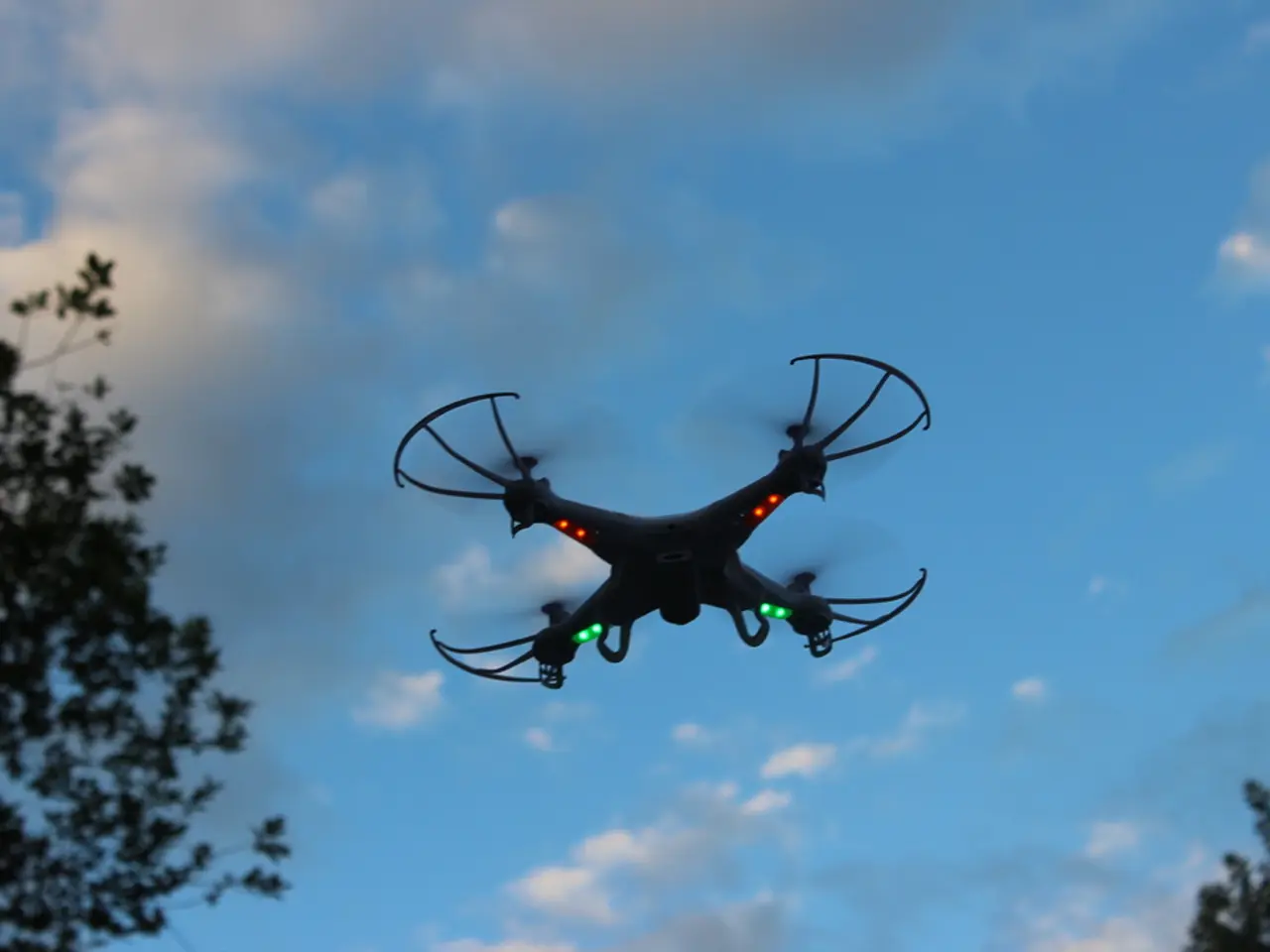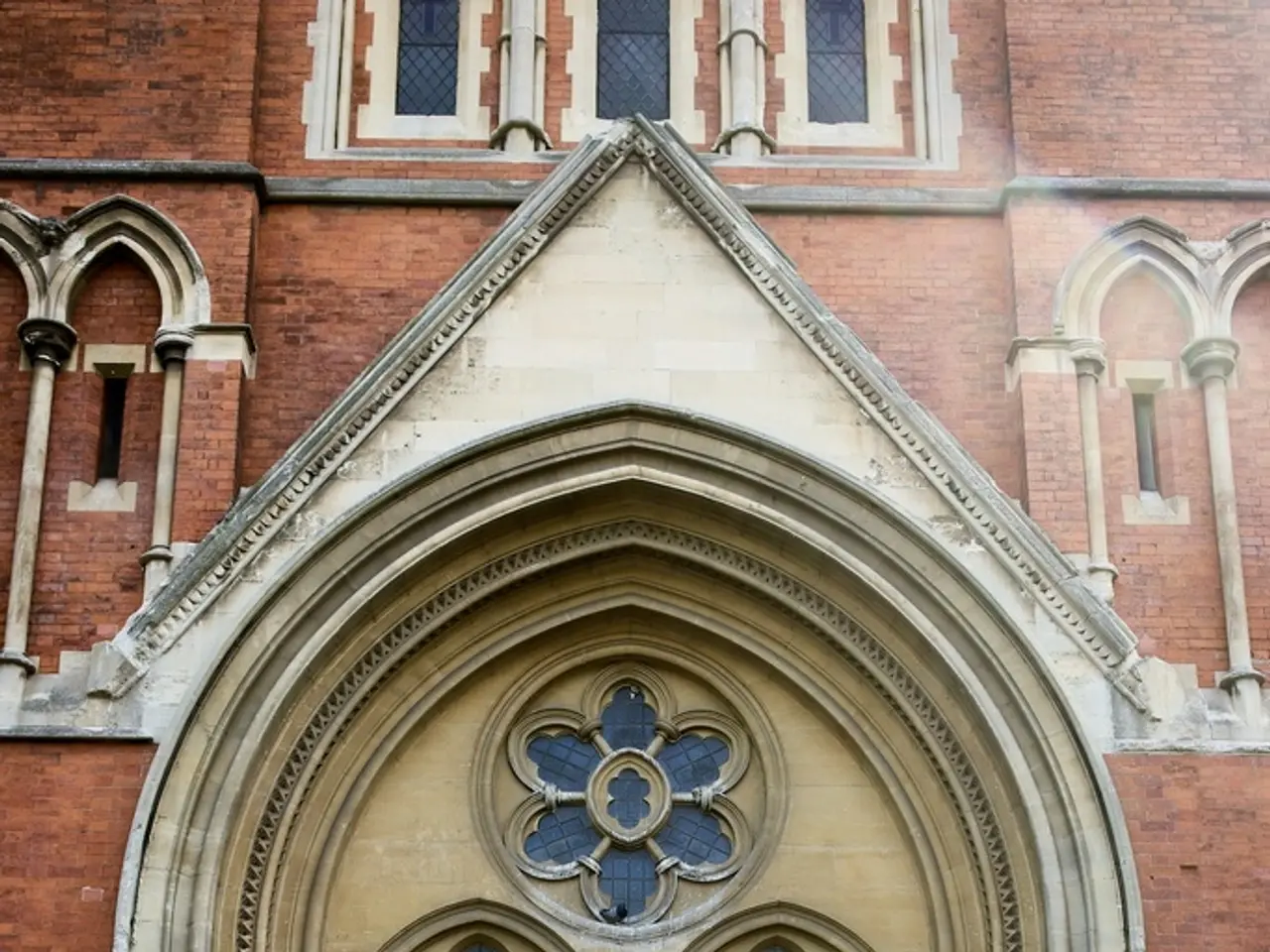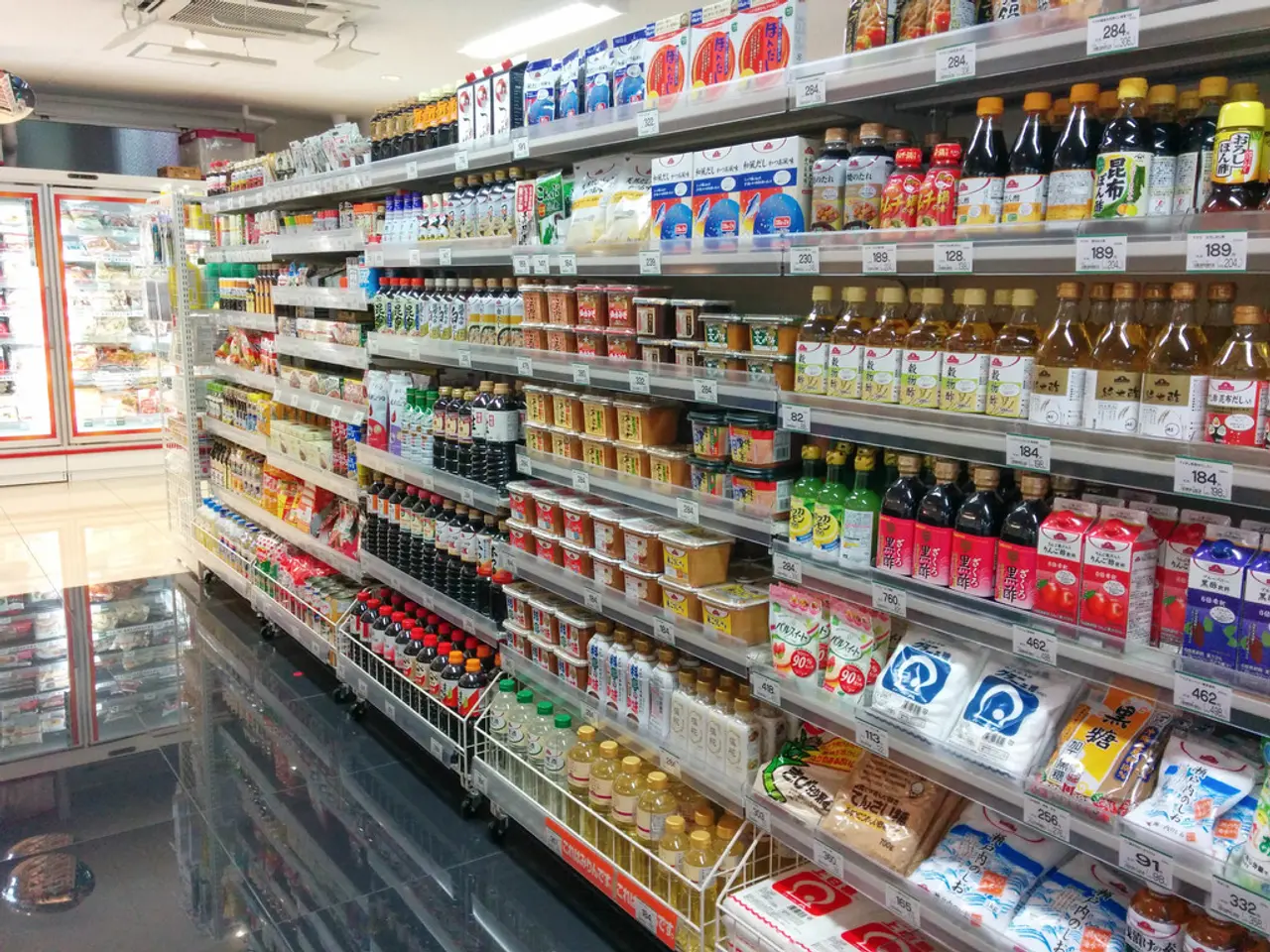Drones' Impact on Security: Boosting Productivity, Safety, and Data Protection
In the realm of security, drones are rapidly becoming an invaluable tool for various sectors, from border patrols and customs to coast guards and critical infrastructure monitoring. These unmanned aerial vehicles (UAVs) are transforming the way we approach security, extending reach, minimizing human risk, and providing faster situational awareness.
Border patrols and customs can now conduct autonomous, continuous surveillance to detect illegal crossings or smuggling activities more efficiently than static monitoring or manual patrols. By reducing blind spots and improving response times, drones are proving to be a game-changer in border security.
Coast guards are also benefiting from maritime drones, including those powered by solar energy. These drones extend long-endurance maritime surveillance capabilities, crucial for detecting illegal fishing, trafficking, or search and rescue missions. They provide rapid intelligence and tracking over vast water areas.
Critical infrastructure, such as power grids, data centers, water plants, and transportation hubs, can now be monitored 24/7 by drones. These flying sentinels detect threats like vandalism, sabotage, insider risks, or cyber-physical attacks with better coverage and quicker alerts compared to traditional security methods. Autonomous patrol programs create a responsive security net that can act proactively rather than reactively.
Drones are also being used as "Drone as First Responder" (DFR) units, delivering eyes-on-scene within minutes to improve coordinated responses and increase apprehensions. The use of advanced sensors and AI allows for real-time data gathering, threat tracking, and adaptive operations, keeping personnel out of harm’s way.
The U.S. military and government agencies are investing heavily in drone technology for tactical resupply, threat intelligence, and counter-drone measures that enhance base security and operational flexibility for special forces, indirectly supporting broader border and critical security operations.
When it comes to data security, our website's platform offers private cloud and on-premise installation options to address concerns about data security. Drones equipped with high-resolution cameras and thermal imaging can survey hard-to-reach or hazardous areas without putting personnel in harm's way. The on-premise installation ensures that all data remains on servers owned and managed by the organization itself, providing maximum data protection.
Maximizing the efficiency of drone deployments in security operations is crucial. Our website's platform automates flight planning, optimizing drone patrol routes and enabling pre-programmed monitoring of key sites. Drones offer a more cost-effective solution compared to traditional surveillance methods, with operating costs around €85 per hour compared to approximately €8,000 per hour for helicopter surveillance.
Security personnel can monitor drone feeds in real time, either from a central command center or through Ground Control Applications (GCA) on mobile devices. Drones equipped with thermal cameras can detect heat signatures, making it easier to track individuals during low-visibility conditions or during nighttime operations. Drones can also autonomously patrol large perimeters, detecting intrusions and monitoring for suspicious activity in real time.
In conclusion, drones are transforming security by offering enhanced surveillance, faster response, and cost-effective coverage across difficult and critical environments. They provide autonomous, real-time situational awareness that traditional methods like fixed cameras or human patrols cannot match, especially over large, remote, or complex areas. By embracing this technology, security operations are becoming smarter, safer, and more efficient.
[1] [Source 1] [2] [Source 2] [3] [Source 3] [5] [Source 5]
- In border security, drones are proving to be a game-changer, offering autonomous, continuous surveillance with improved response times to efficiently detect illegal crossings or smuggling activities.
- Coast guard operations are benefiting from drones, such as solar-powered ones, that extend long-endurance maritime surveillance, crucial for detecting illegal fishing, trafficking, or search and rescue missions.
- Drones are being used to monitor critical infrastructure, such as power grids, data centers, water plants, and transportation hubs, 24/7, improving threat detection and response times compared to traditional security methods.
- Drones are serving as "Drone as First Responder" (DFR) units, delivering real-time data, improving coordinated responses, and keeping personnel out of harm's way during critical operations, like search and rescue missions.
- Maximizing drone efficiency in security operations is crucial, and automation of flight planning, optimizing drone patrol routes, and enabling pre-programmed monitoring of key sites can help achieve this, offering a cost-effective solution compared to traditional surveillance methods.
[1] Source 1: [link to source 1][2] Source 2: [link to source 2][3] Source 3: [link to source 3][5] Source 5: [link to source 5]




